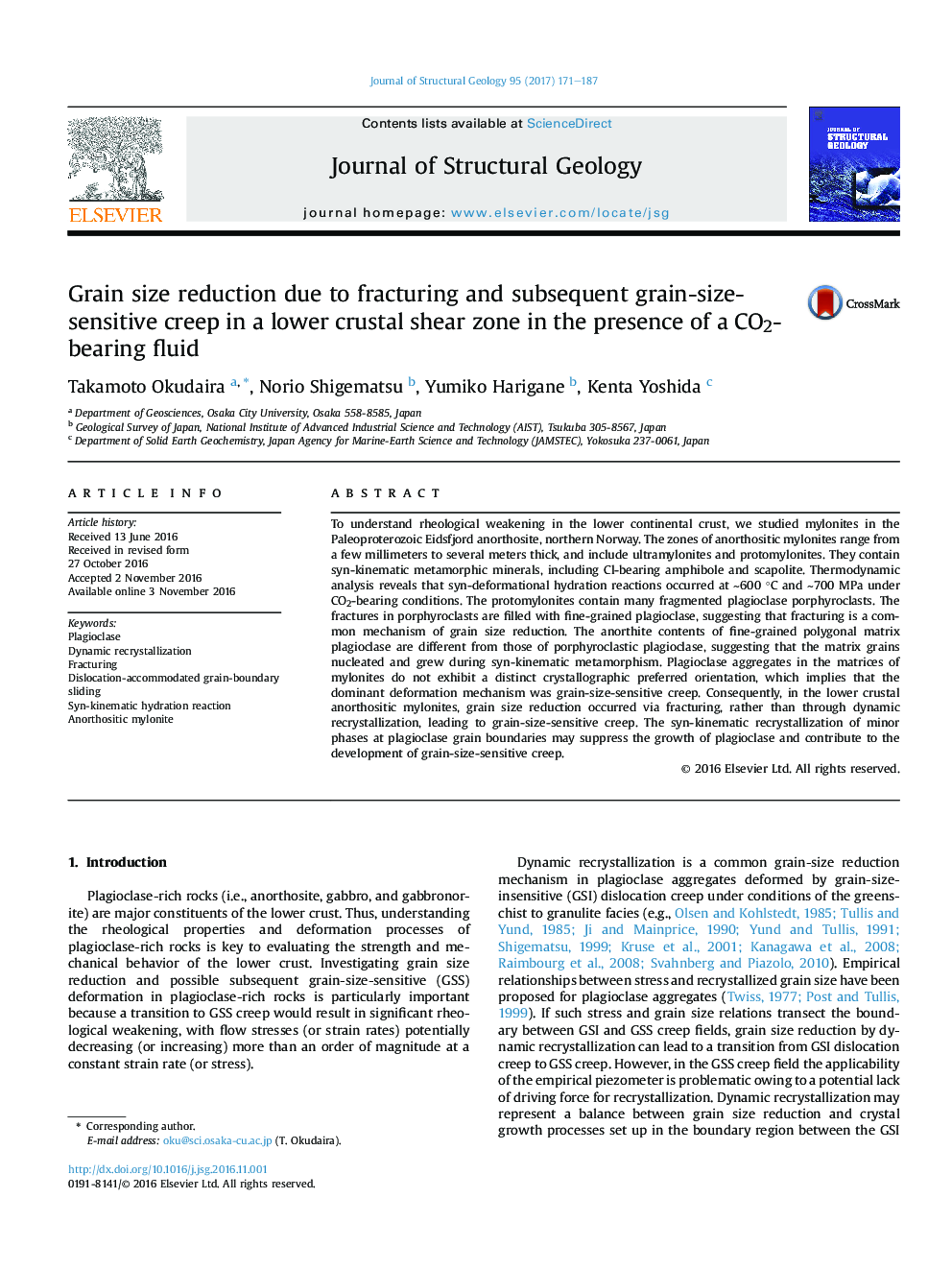| کد مقاله | کد نشریه | سال انتشار | مقاله انگلیسی | نسخه تمام متن |
|---|---|---|---|---|
| 5786367 | 1640485 | 2017 | 17 صفحه PDF | دانلود رایگان |
- Fracturing is a common mechanism of grain size reduction in anorthositic mylonites.
- Syn-kinematic reactions occur under CO2-bearing, epidote-amphibolite facies conditions.
- Grain-size-sensitive creep is the dominant deformation mechanism.
- Syn-kinematic recrystallization of minor phases maintains grain-size-sensitive creep.
To understand rheological weakening in the lower continental crust, we studied mylonites in the Paleoproterozoic Eidsfjord anorthosite, northern Norway. The zones of anorthositic mylonites range from a few millimeters to several meters thick, and include ultramylonites and protomylonites. They contain syn-kinematic metamorphic minerals, including Cl-bearing amphibole and scapolite. Thermodynamic analysis reveals that syn-deformational hydration reactions occurred at â¼600 °C and â¼700 MPa under CO2-bearing conditions. The protomylonites contain many fragmented plagioclase porphyroclasts. The fractures in porphyroclasts are filled with fine-grained plagioclase, suggesting that fracturing is a common mechanism of grain size reduction. The anorthite contents of fine-grained polygonal matrix plagioclase are different from those of porphyroclastic plagioclase, suggesting that the matrix grains nucleated and grew during syn-kinematic metamorphism. Plagioclase aggregates in the matrices of mylonites do not exhibit a distinct crystallographic preferred orientation, which implies that the dominant deformation mechanism was grain-size-sensitive creep. Consequently, in the lower crustal anorthositic mylonites, grain size reduction occurred via fracturing, rather than through dynamic recrystallization, leading to grain-size-sensitive creep. The syn-kinematic recrystallization of minor phases at plagioclase grain boundaries may suppress the growth of plagioclase and contribute to the development of grain-size-sensitive creep.
Journal: Journal of Structural Geology - Volume 95, February 2017, Pages 171-187
